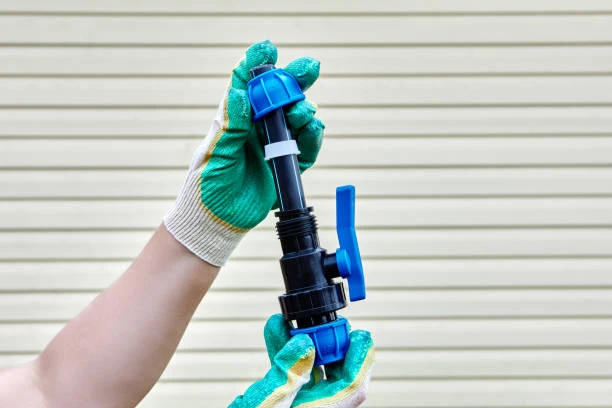HDPE pipe fittings have gained significant attention in various industries due to their exceptional properties and versatility. Known for their durability and resistance to corrosion, these fittings play a crucial role in ensuring efficient fluid transport across diverse applications. In this article, we will explore the features of HDPE pipe fittings, their connection methods, and their widespread applications.
What is HDPE?
HDPE is a thermoplastic polymer made from petroleum. Its molecular structure provides a high strength-to-density ratio, making it ideal for a variety of applications. When used in pipe fittings, HDPE offers excellent performance in both industrial and municipal environments.
Features of HDPE Pipe Fitting
1. Corrosion Resistance
One of the standout features of HDPE pipe fitting is their resistance to corrosion. Unlike traditional metal fittings, HDPE does not rust or corrode when exposed to harsh chemicals, moisture, and other environmental factors. This property extends the lifespan of the fittings and reduces maintenance costs, making HDPE an economical choice for long-term projects.
2. Flexibility and Lightweight
HDPE fittings are both lightweight and flexible, which makes them easier to handle and install compared to heavier materials like PVC or metal. This flexibility allows for easier transportation and installation, particularly in challenging terrains.
3. Chemical Resistance
HDPE pipe fitting can withstand a wide range of chemicals, making them suitable for transporting various fluids, including acids and alkalis. This property makes them ideal for industries such as chemical processing and agriculture, where chemical exposure is common.
4. Durability
The durability of HDPE fittings is another significant advantage. They can withstand high pressure and are resistant to impacts and abrasion. This durability ensures that the fittings remain intact and functional over long periods, even under demanding conditions.
5. Environmental Friendliness
HDPE is a recyclable material, contributing to sustainability efforts. When used in pipe systems, these fittings can be recycled at the end of their life cycle, reducing waste and environmental impact.
Connection Methods for HDPE Pipe Fitting
Proper connection of HDPE pipe fitting is essential for maintaining system integrity. There are several methods used for connecting HDPE fittings, each suited for different applications:
1. Butt Fusion
Butt fusion is a widely used method for joining HDPE pipes and fittings, where the operators heat the ends of the pipes and fittings until they melt, then push them together to form a permanent bond. This method creates a strong joint, ensuring minimal leakage and maximum strength.
2. Electrofusion
Electrofusion involves the use of an electric current to heat and fuse the surfaces of HDPE fittings. This method is particularly useful for connections in tight spaces or where precision is critical. Electrofusion fittings come with built-in resistance wire, allowing for controlled heating.
3. Mechanical Couplings
Mechanical couplings use clamps and bolts to join HDPE pipes and fittings. This method often suits temporary installations or when disassembling the joint is necessary. Mechanical couplings offer versatility and work with various types of pipes.
4. Socket Fusion
Socket fusion is another joining method where the ends of the pipe and fitting are heated, then pushed together in a socket joint. This method is best for smaller diameters and offers a reliable connection.
Applications of HDPE Pipe Fittings
HDPE pipe fittings are used across a wide range of industries and applications due to their versatile properties. Here are some of the most common applications:
1. Water Supply Systems
HDPE fittings are commonly used in municipal water supply systems. Their corrosion resistance and durability make them ideal for transporting potable water, ensuring safety and longevity.
2. Sewage and Wastewater Management
In sewage and wastewater management, professionals prefer HDPE fittings for their resistance to chemicals and abrasion. They work in both gravity and pressure sewer systems, providing effective solutions for waste transport.

3. Agricultural Applications
In agriculture, HDPE pipe fittings are utilized for irrigation systems. Their flexibility and chemical resistance allow for efficient distribution of water and fertilizers, enhancing crop production.
4. Mining and Industrial Applications
The mining and industrial sectors use HDPE fittings for transporting slurries and chemicals. Their strength and resistance to corrosive materials make them suitable for harsh industrial environments.
5. Telecommunications
HDPE fittings are also used in telecommunications to protect underground cables. Their durability and resistance to environmental factors ensure that communication lines remain intact.
Conclusion
HDPE pipe fittings offer a combination of strength, flexibility, and resistance to corrosion, making them a superior choice for various applications. Their diverse connection methods allow for versatile installation options, while their environmental friendliness enhances their appeal in today’s eco-conscious market. Whether used in municipal water systems, agricultural applications, or industrial settings, HDPE pipe fittings prove to be an essential component for reliable fluid transport.
FAQs
- What is the lifespan of HDPE pipe fittings?
HDPE pipe fittings can last over 50 years when properly installed and maintained. - Can HDPE fittings be recycled?
Yes, HDPE fittings are recyclable, making them an environmentally friendly option. - Are HDPE pipe fittings suitable for high-pressure applications?
Yes, HDPE fittings are designed to withstand high pressures, making them suitable for various applications. - What temperatures can HDPE pipe fitting handle?
HDPE fittings can generally handle temperatures up to 140°F (60°C) but may vary based on specific grades. - How are HDPE pipe fittings connected?
They can be connected using methods like butt fusion, electrofusion, mechanical couplings, and socket fusion.


















